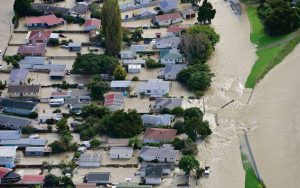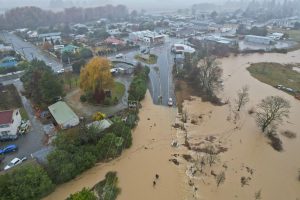Flooding
 Flooding can be defined as any area of land covered by water, which is normally dry. Sometimes water levels can rise slowly and unnoticed, other times flooding can be rapid, sudden and unexpected. Floods are one of the main weather hazards that can be made worse by where we chose to live and how we manage our environment.
Flooding can be defined as any area of land covered by water, which is normally dry. Sometimes water levels can rise slowly and unnoticed, other times flooding can be rapid, sudden and unexpected. Floods are one of the main weather hazards that can be made worse by where we chose to live and how we manage our environment.
Rain is the most important factor in flooding. How much rain, how heavy and for how long it falls will all have an impact on the level of flooding. What happens to the rain once it hits the land can also decide which areas will flood. Developed land surfaces or recent weather conditions will both play a part in how serious the floods are. The most common influencing factors are: Recent weather – The more rain in recent days or weeks, the more likely a flood is to occur. Even if rain falls land affected by drought, the soil may be too hard and dry to absorb any water.
Urbanization – water flows much faster over pavements and concrete than grass and soil. Soil Type – Rainfall moves through sandy soil much faster and more easily than through thick clay. Topography – Most of the world’s flash floods occur in mountains where small streams can become raging rivers in a matter of seconds, as they fall almost vertically. In lowland areas, the slopes are gentler with floods taking longer to develop.
 Experts have named two types of floods:
Experts have named two types of floods:
1. River floods 2. Flash floods
A river flood forms slowly, normally because of melting winter snow or a very wet season. Smaller streams will eventually join larger rivers and the water’s power can be great. Flooding can cause disruption for weeks on end, destroying buildings, washing away vehicles and roads.
Flash flooding is far more dangerous and can happen very quickly. It is usually caused by large amounts of heavy rainfall from thunderclouds moving slowly over a land area that is likely to flood. Very heavy rainfall over an hour or two can create a ‘wall of water’ that can raise river and lake levels by just one meter in a minute. Flash floods are much more likely in the area where it has been raining for a few days and the soil is saturated. The natural environment is also an important factor, and some of the most devastating flash floods have occurred in narrow, steep-sided canyons.